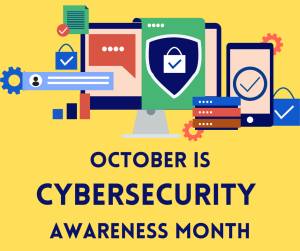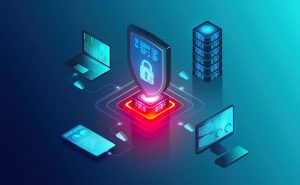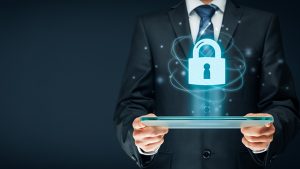Cybersecurity Awareness
By:Triad Engineering
Twenty years ago, the cyber threats faced personally and in the workplace were much different than they are today. We lived in the somewhat passive and relative comf
ort of believing that online passwords protected our information. Over the last twenty years, online criminals have become increasingly more aggressive, sophisticated, and adept at hacking into our information. To remain protected, we now must take a more active stance in securing our personal and professional information against cyber criminals. In 2021, the Federal Trade Commission received more than 1.4 million reports of identity theft (Source: Federal Trade Commission, Consumer Sentinel Network Data Book), and in 2022 identity thieves stole approximately $52 billion from American people and businesses (Source: Javelin Strategy & Research, Identity Fraud Study: The Virtual Battleground).
The Cybersecurity and Infrastructure Security Agency ( https://www.cisa.gov/ ) has designated the month of October as Cybersecurity Month. Take advantage of these tips and tactics to help stay ahead of criminals, do your part to protect your critical personal and professional information, and turn the heat up on would-be hackers.
Utilize multi-factor authentication (MFA)
- Make it harder for cybercriminals to compromise your accounts by enabling MFA.
- Where should you use MFA?
- Financial info like banks and online stores
- Personal info, like social media and healthcare apps
- Information used for work
- Passwords are the frontline gatekeepers of your online kingdom. But why settle for one line of defense when you can have two? MFA doubles the security, making your accounts much more fortified.
Avoid phishing attempts
- Don’t take the bait!
- Reporting a scam helps warn others against cyber incidents. Don’t hesitate to call out phishing attempts. To stop it, report it.
- Most cyber incidents start with a phish.
- Common characteristics of phishing attempts:
-
- Create a sense of urgency or claim to need help
- MFA adds an extra layer of protection to your accounts, making it harder for hackers to get in.
- Ask for personal or financial information
- Want you to download a file or click on a link
-
- Phishing emails disguise themselves as harmless messages, but they’re dangerous digital piranhas swimming in your inbox. Stay vigilant, spot the signs, and report suspicious emails.
- Phishing emails are sneaky bait trying to reel you in. Learn how to spot and report them.
- Phishing emails try to breach your defenses, but you can outsmart them. Learn the telltale signs of phishing, such as misspellings, suspicious attachments, or urgent requests, and report those fraudulent messages.
Leverage the benefits of password managers
- The average adult may have up to 100 passwords at any given time. Password managers create strong, unique passwords for each account.
- No matter the account, all passwords should be created with these three words in mind: long unique, and complex.
- What are the advantages of password managers?
- Saves time
- Generates strong passwords
- Identifies weak passwords
- Password Managers manage all of your online credentials like usernames and passwords. Passwords are then stored in a safe, encrypted database, and new ones are generated when needed.
- Strong passwords are your first line of defense against cyber threats. Don’t settle for weak combinations. Create unique and complex passwords for each account and consider using a password manager for added convenience and security.
- Hackers love easy targets, so don’t make it easy for them. Say “no” to password123, QWERTY, etc. Opt for unique and complex passwords – allow a password manager to do the heavy lifting for you.
Update software early and often
- If you connect it, protect it. Outsmart cyber criminals by regularly updating software.
- Any device that connects to the internet is vulnerable to risks. The best defense is to keep device security software, web browsers, and operating systems up to date.
- All those update alerts from your software are important to install. Not only do they fix things that might be buggy, but they also patch up any security flaws.
- Pay attention to software update alerts and set your software to auto-update–it’s an easy way to keep things safe.
- Stay ahead by enabling automatic software updates. Automatic software updates work silently to protect your devices. Say goodbye to outdated software and embrace the power of the latest features, enhanced performance, and tightened security.
Implementing basic best practices such as these will help to keep your personal and professional information SAFE and SECURE!


